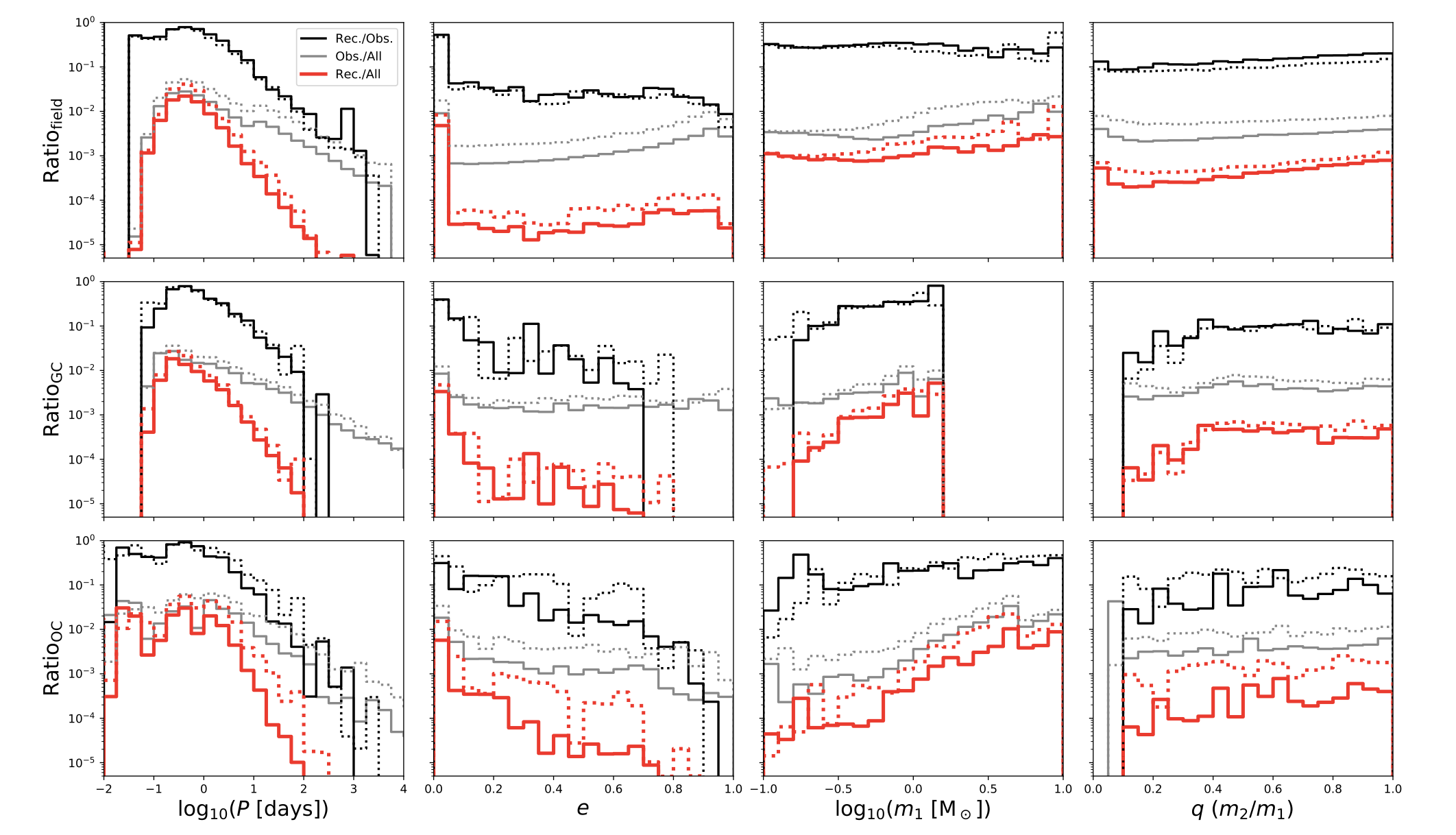Simulating Eclipsing Binary Yields of the Rubin Observatory in the Galactic Field and Star Clusters

This work examined looked at how many eclipsing binaries (EBs) we should anticipate observing (and correctly characterizing) during the Rubin Observatory’s Legacy Survey of Space and Time. We explore two observing cadences – the first, baseline2018a (baseline) is LSST’s default cadence (roughly even sky coverage every ~3 days) and the second, colossus_2664 (colossus), is a proposed cadence that better samples the plane of the Galaxy.
We generate a realistic stellar population for each of the Galaxy, Galactic globular clusters, and Galactic open clusters, randomly selecting stars from these populations to create binaries and sampling their properties from realistic distributions consistent with observations. This constitutes our all binary population.
We designate eclipsing binaries which meet several observability criteria (including being oriented so that they eclipse, having periods < 10 years, being luminous enough to be detected with the Rubin Observatory but not so bright that they saturate the sensitive detector) as observable with Rubin Observatory. This population is further broken down into recoverable EBs, for which we return an accurate period from multi-band observations during the ten years of our simulated survey.
Looking at the number of observable and recoverable EBs for the two cadences, more EBs are observable with colossus, but of those that are observable, a higher fraction are recoverable with the baseline cadence. With baseline, we expect ~3 million detached EBs to be observed and correctly characterized over the course of the Legacy Survey of Space and Time; the colossus cadence could potentially increase the observed sample by a factor of ~2 and increase the recoverable sample by up to 1.7x. Adding in non-detached eclipsing binaries results in an additional increase of up to a factor of ~3.